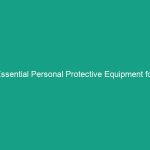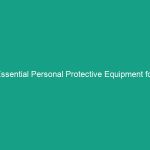Good Morning Team!
Today, we’re diving into a vital topic that affects us all: Not Just a Program: Long-term Commitment to HSE for Lasting Safety. It’s essential to understand that Safety in our workplace is not just a checklist or a program; it’s a long-term commitment that requires everyone’s involvement. This talk will highlight why this commitment is crucial for our safety and well-being every day.
Understanding Long-term Commitment to HSE
The term long-term commitment to HSE refers to an ongoing dedication to Health, Safety, and Environment practices that go beyond mere compliance. It encompasses a culture of safety that integrates these practices into our daily operations and decision-making processes.
This commitment is important because it not only protects us from workplace injuries but also promotes a culture of care and responsibility. When each of us prioritizes safety, we create an environment where everyone feels valued and protected.
Common misconceptions include the idea that HSE is only about following rules or passing inspections. In reality, it’s about fostering a proactive approach where safety becomes second nature in everything we do.
Key Hazards, Risks, and Safety Considerations
Understanding the potential Hazards and risks associated with inadequate HSE practices is crucial. Common hazards include:
- Physical Hazards: These include slips, trips, and falls, which are often caused by cluttered workspaces or inadequate Training.
- Chemical Hazards: Exposure to harmful substances can occur if proper handling and storage Procedures are not followed.
- Ergonomic Risks: Poor workstation design can lead to musculoskeletal disorders, affecting our health in the long run.
Ignoring these hazards can result in severe consequences, including injuries that could lead to long-term disabilities or even fatalities. We must recognize that our commitment to safety can prevent these outcomes.
Best Practices, Procedures, & Actionable Advice
To ensure a long-term commitment to HSE, we must adopt Best Practices that are easy to follow. Here are some actionable steps:
- Regular Training: Participate in safety training sessions to stay updated on Best Practices and compliance requirements.
- Safety Inspections: Conduct regular inspections of your work area to identify and mitigate hazards before they cause harm.
- Reporting Hazards: Always report any unsafe conditions or near misses to your supervisor immediately.
- Emergency Preparedness: Familiarize yourself with emergency procedures and ensure that emergency exits are clear and accessible.
For example, let’s consider a recent incident where a team member slipped due to a wet floor that was not marked. By ensuring that we actively monitor and report such hazards, we can prevent accidents like this from happening.
Regulations, Standards, and Compliance
Understanding and adhering to Regulations is a crucial part of our commitment to HSE. Key regulations include:
- Occupational Safety and Health Administration (OSHA): osha sets and enforces Standards to ensure safe working conditions.
- ISO 45001: This international standard outlines requirements for Occupational Health and safety management systems.
- Company-Specific Policies: Familiarize yourself with our company’s safety policies and procedures that may exceed standard regulations.
Compliance with these regulations is not just about avoiding fines; it’s about protecting each other and ensuring a safe working environment. When we comply, we demonstrate our commitment to safety, which in turn fosters trust and morale among our team.
Employee Engagement & Discussion
Now, let’s open the floor for discussion. I’d like you to think about the following questions:
- What safety challenges have you encountered related to our HSE practices?
- How can we improve our commitment to safety in our daily routines?
- Are there any suggestions you have for enhancing our safety training sessions?
Feel free to share your thoughts and experiences. Your input is invaluable in creating a safer workplace for everyone.
Conclusion & Key Takeaways
In conclusion, our long-term commitment to HSE is essential for ensuring lasting safety in our workplace. By understanding the importance of safety, recognizing hazards, and following best practices, we can make a significant difference in our daily operations.
Let’s remember that safety is a shared responsibility. Each of us has a role to play in nurturing a culture where safety is prioritized. Thank you all for your attention and for your ongoing commitment to creating a safe work environment. Let’s continue to support each other in making safety a top priority every day!


